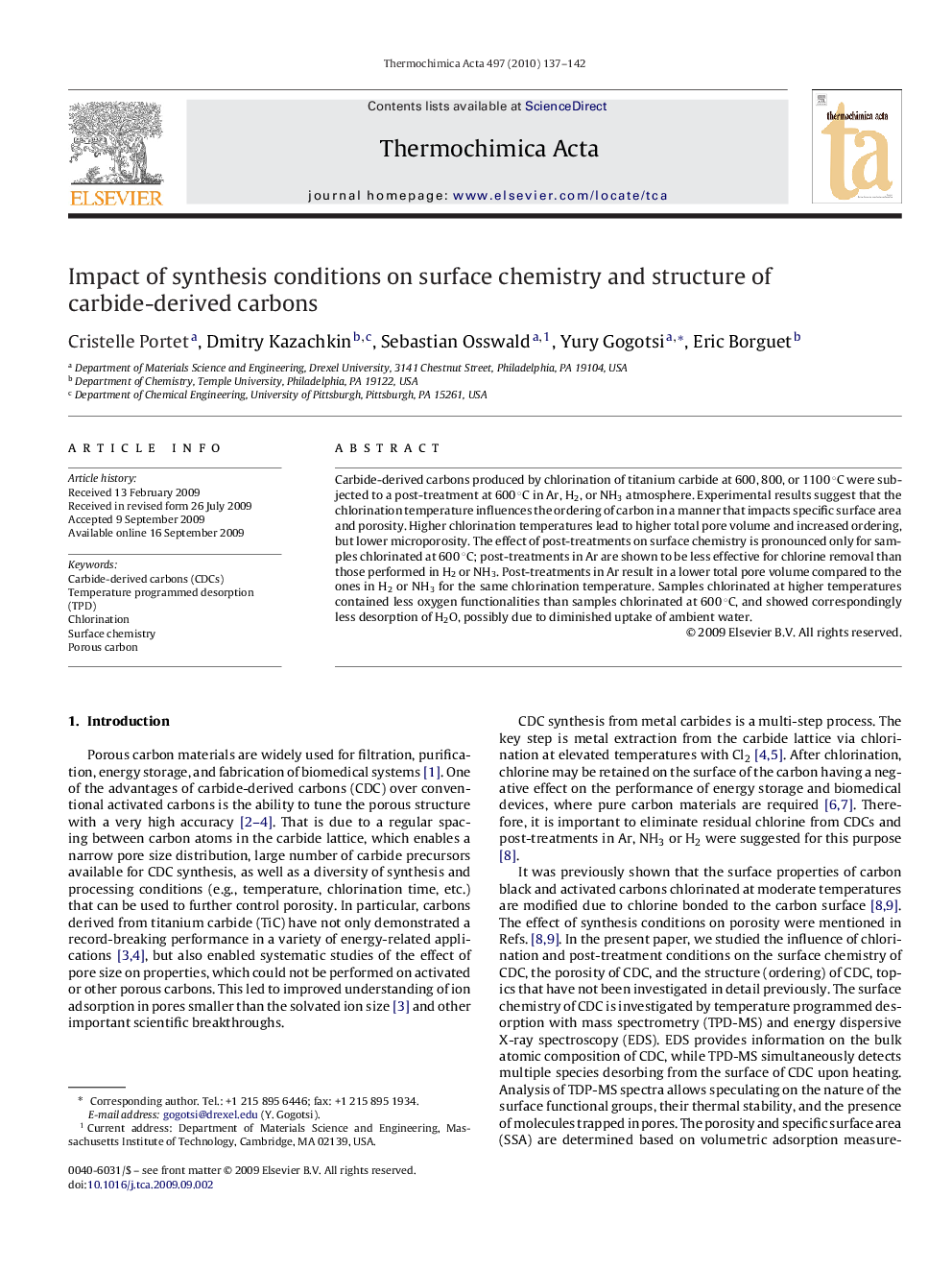| Article ID | Journal | Published Year | Pages | File Type |
|---|---|---|---|---|
| 675044 | Thermochimica Acta | 2010 | 6 Pages |
Carbide-derived carbons produced by chlorination of titanium carbide at 600, 800, or 1100 °C were subjected to a post-treatment at 600 °C in Ar, H2, or NH3 atmosphere. Experimental results suggest that the chlorination temperature influences the ordering of carbon in a manner that impacts specific surface area and porosity. Higher chlorination temperatures lead to higher total pore volume and increased ordering, but lower microporosity. The effect of post-treatments on surface chemistry is pronounced only for samples chlorinated at 600 °C; post-treatments in Ar are shown to be less effective for chlorine removal than those performed in H2 or NH3. Post-treatments in Ar result in a lower total pore volume compared to the ones in H2 or NH3 for the same chlorination temperature. Samples chlorinated at higher temperatures contained less oxygen functionalities than samples chlorinated at 600 °C, and showed correspondingly less desorption of H2O, possibly due to diminished uptake of ambient water.
